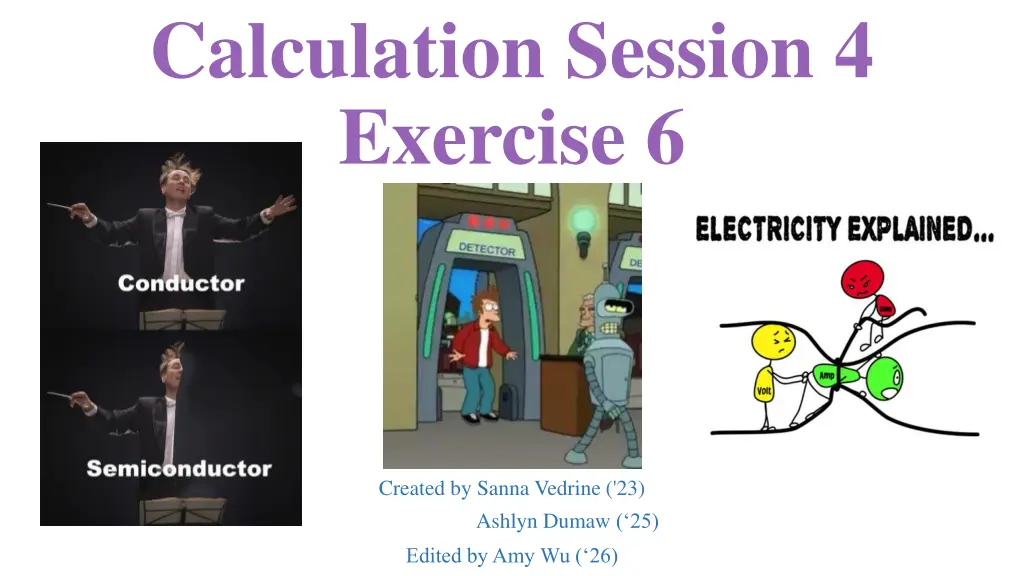
Interaction of Photons with Semiconductors
Discover how photons interact with semiconductors, including exciting electrons across band gaps and the flow of current in circuits. Explore the energy levels required for electron excitation and the detection process using various detectors like W, X, Y, and Z.
Download Presentation

Please find below an Image/Link to download the presentation.
The content on the website is provided AS IS for your information and personal use only. It may not be sold, licensed, or shared on other websites without obtaining consent from the author. If you encounter any issues during the download, it is possible that the publisher has removed the file from their server.
You are allowed to download the files provided on this website for personal or commercial use, subject to the condition that they are used lawfully. All files are the property of their respective owners.
The content on the website is provided AS IS for your information and personal use only. It may not be sold, licensed, or shared on other websites without obtaining consent from the author.
E N D
Presentation Transcript
Calculation Session 4 Exercise 6 Created by Sanna Vedrine ('23) Ashlyn Dumaw ( 25) Edited by Amy Wu ( 26)
Interaction of Photons with Semiconductors CASE I: Ephoton Egap photon E1 E2 E1 Photon s energy is absorbed to excite electron across the semiconductor s band gap Once the electron is excited (conduction band) and given a potential difference in circuit (battery), current will flow Ammeter will detect the current E2 E1 E2 E1 E2 E1 E2 E1 E2 E1 E2 E1 E2 type A type B type A semiconductor type B type B type A type A type B type A type B type B type A battery ammeter detector W detector W semiconductor energy levels detector X detector Y detector Z detector X detector Y detector Z conduction band band gap valence band -
Interaction of Photons with Semiconductors CASE I: Ephoton Egap photon E1 E2 E1 Photon s energy is absorbed to excite electron across the semiconductor s band gap Once the electron is excited (conduction band) and given a potential difference in circuit (battery), current will flow Ammeter will detect the current E2 E1 E2 E1 E2 E1 E2 E1 E2 E1 E2 E1 E2 type A type B type A semiconductor type B type B type A type A type B type A type B type B type A battery ammeter detector W detector W semiconductor energy levels detector X detector Y detector Z detector X CASE II: Ephoton < Egap Photon doesn t have enough energy to excite electron across the semiconductor s band gap No current will flow! Photon passes through the semiconductor detector Y detector Z conduction band band gap valence band -
Detector W 1.7 eV 1.2 eV E2 > Egap, A E1 > Egap, A 1.2 > 1.1 1.7 > 1.1 E1 E2 E1 E2 E1 E2 E1 E2 Both types of photons have enough energy to excite e- across band gap type A type B type A type B type B type A TYPE A (Egap = 1.1 eV) - Current flows and detector will detect both photon 1 and photon 2 detector W detector X detector Y detector Z
Detector X 1.7 eV 1.2 eV E2 < Egap, B E1 > Egap, B 1.2 < 1.6 1.7 > 1.6 E1 E2 E1 E2 E1 E2 E1 E2 Only photon 1 has enough energy to excite e- across band gap into conduction band type A type B type A type B type B type A TYPE B (Egap = 1.6 eV) - Current flows and detector will detect only photon 1 detector W detector X detector Y detector Z
Detector Y 1.7 eV 1.2 eV E2 > Egap, A E1 > Egap, A 1.2 > 1.1 1.7 > 1.1 No electrical contact E1 E2 E1 E2 E1 E2 E1 E2 Both types of photons have enough energy to excite e- across band gap and will be absorbed by the cover type A type B TYPE A (Egap = 1.1 eV) type A type B type B type A TYPE B (Egap = 1.6 eV) Neither photon will reach type B detector so there will be no current flow detector W detector X detector Y detector Z
E1 > Egap, B E2 < Egap, B Detector Z 1.7 > 1.6 1.2 < 1.6 1.7 eV 1.2 eV Photon 1 has enough energy to excite e- across band gap into type B and will be absorbed by the cover Photon 2 will not be absorbed by the cover E1 E2 E1 E2 1.2 > 1.1 E1 E2 E1 E2 E2 > Egap, A type A type B TYPE B (Egap = 1.6 eV) Photon 2 has enough energy to excite e- across band gap of type A and is absorbed type A type B type B type A TYPE A (Egap = 1.1 eV) - Current flows and detector will detect only photon 2 detector W detector X detector Y detector Z
Summary of Photon Detectors E1 E2 E1 E2 E1 E2 E1 E2 type A type B type A type B type B type A detector W detector X detector Y detector Z Detects both types of photons (C) Detects only type-1 photons (A) Detects only type-2 photons (B) Detects no photons
Key Takeaways The semiconductor bandgap represents the minimum amount of energy to excite an electron from its bound state (valence band) to its free state (conduction band) For the photon to be absorbed by the semiconductor, it must have enough energy to excite an electron across the band gap For current to flow, there must be an electrical potential across the semiconductor (provided by the battery)
